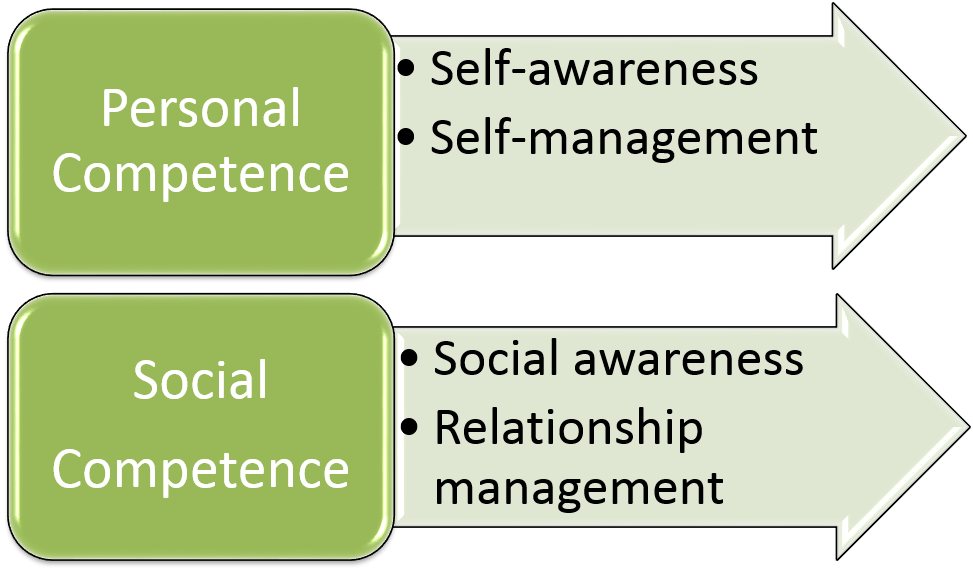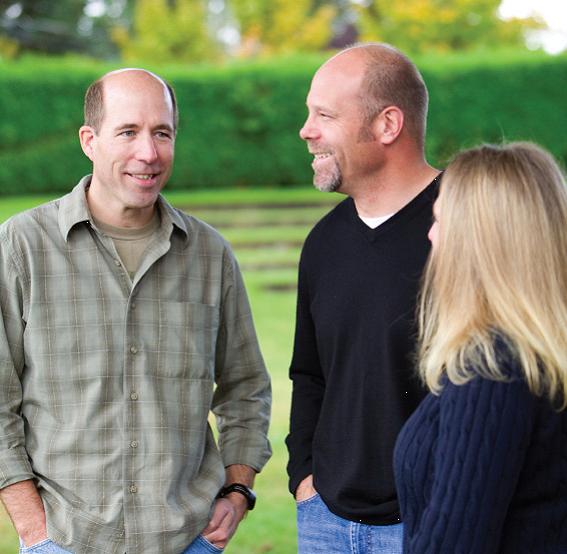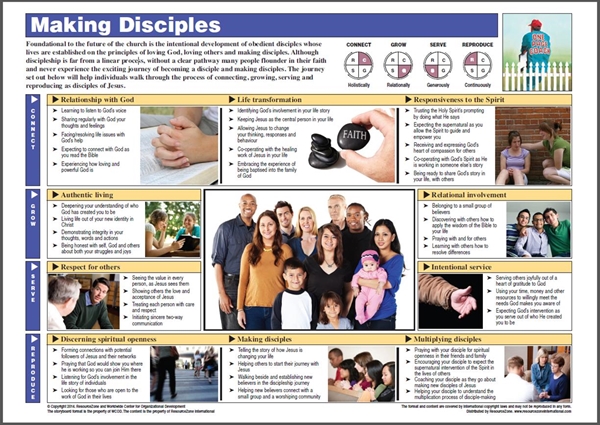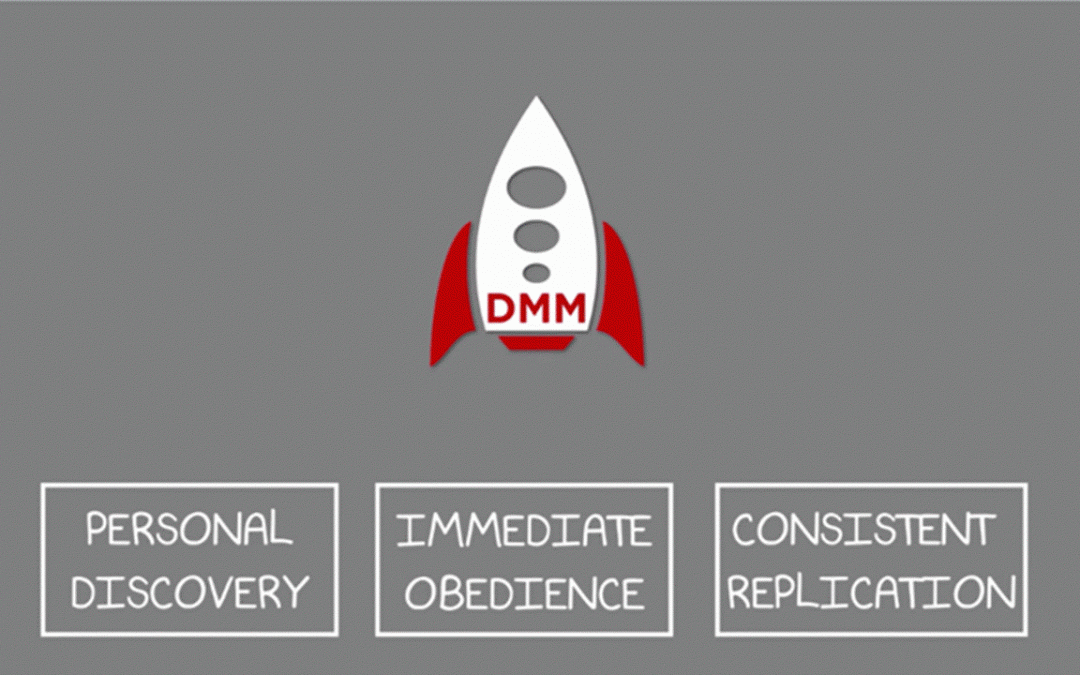
by Gary Reinecke | Aug 26, 2016 | Coach Training, Leader Development, Personal Development |
Several years ago my family traveled from Phoenix, AZ to camp at “Big Basin”, which is in the Redwoods of Northern Cal. To take advantage of the time in the van my wife and I decided to listen to Daniel Goleman’s book Emotional Intelligence on CD. We discussed the case studies with our then 8 and 10-year old, who were very curious about the topic.
The thing I remember from that research and others since, is that EQ is flexible and can be developed, in contrast to IQ. In fact, I’ve witnessed how EQ can be developed personally, with my kids and leaders I coach – over and over again.
Recently, I came across a simple framework for EQ that I want to pass-on. In their book entitled, Emotional Intelligence 2.0 by Travis Bradberry & Jean Greaves (p.24), they discovered four skills that comprise EQ, as illustrated above:
The top two skills, self-awareness and self-management, are more about you. The two bottom skills, social awareness and relationship management, are more about how you are with other people.
EQ is a powerful force. EQ can be developed, like a muscle – over time. Here are three questions to help you harness your EQ:
- Identify one skill from the illustration above that you will work on this week?
- What will you do to develop that skill and when?
- How will you assess your progress?
With intention, action and review, EQ can be developed. If you would like more information, click on Emotional Intelligence. Then scroll down the page and expand the menu of resources.

by Gary Reinecke | Aug 22, 2016 | Church Multiplication, Coach Training, Leader Development |
A couple of weeks ago I was speaking to a church planting leader.
He asked my opinion on the best way to develop a church planter. I suggested that he first take a look at the essential skills a planter needs to plant a church. Then I asked him what that training process would look like. His response did not surprise me…
- Just-in-time training is the best way to equip a church planter because the learning loop is short.
- The ideal context he told me, would be the church where the planter is already engaged.
- And finally, although some classroom instruction would be helpful, having a coach was paramount.
I affirmed his insights and then asked him if he would be interested in seeing a pathway to apprentice a church planter, highlighting best practices others have gleaned from their experience. His eyes lit up, suggesting that he would be very interested. That’s when I told him about the Church Planter Pathway Storyboard.
The beauty of the Church Planter Pathway Storyboard is that a coach can use this to apprentice a prospective planter using a one page format (called the One Page Coach) but is not bound to a particular model. Four developmental phases illustrate the ongoing process a church planter must visit and revisit, again and again, until a high degree of confidence has been demonstrated in the various skills needed. Because this is a competency-based process the planter-in-training does not “graduate” until competency has been achieved vs. completing a course or working through a set curriculum.
See if the Church Planter Pathway Storyboard touches on the most critical areas of developing a church planter based on your experience.

by Gary Reinecke | Aug 13, 2016 | Church Growth, Church Multiplication, Disciplemaking, Focused Ministry, Leader Development |
The question goes something like this: “Is there a difference between discipleship and leadership?” In your experience I wonder if you have found that discipleship and leadership bleed into each other. I actually had a leader ask the question and it caused me to reflect – my initial response was “Yes, there a difference.”
One simple distinction is that discipleship focuses on following and leadership, on influencing. This to is too simplistic of course; because a leader, the best leaders, follow Jesus. At the same time though, a disciple does shift their behavior when they lead and intentionally influence others.
I’ve spent a lot of time over the last 25+ years focusing on these two dimensions. If you would like to read more, check-out the free downloadable article entitled the Leadership Multiplication Pathway (go to the bottom of the page). In the article, I focus on the distinctions between being a disciple and a leader, using the Leadership Multiplication Pathway storyboard to illustrate a path leaders can use to coach people on their journey.

by Gary Reinecke | Aug 8, 2016 | Church Growth, Church Multiplication, Disciplemaking |
The organic vs. linear conversation about making disciples continues.
Organic, or highly relational approaches work. Linear, or programmatic approaches work. Church planters and pastors make disciples in a way that is effective in their context. You make disciples in your way.
One approach does not fit all.
When leaders know the process of disciplemaking they realize that, as long as the goal is clear and behavioral milestones are established; they can personalize their approach. By the process, I mean, the essential behaviors of a maturing disciple e.g. broadly defined as loving God, loving your neighbor and making disciples. In practice, they blend the organic with the linear.
For instance, one leader that experienced the tension between an organic and linear approach discovered a happy medium with a very simple strategy that requires a discipleship coach, to guide emerging disciples through the phases of maturity e.g. connecting, growing, serving and reproducing. He has contextualized a strategy so that it incorporates the essentials of disciplemaking using the Making Disciples storyboard (seen above) as the framework. The storyboard describes the process of a maturing disciple.
Here are some ways disciplemaking coaches use the Making Disciples storyboard in a coaching relationship:
- Assessing: Where are you in your journey?
- Clarifying: What’s next on your journey?
- Evaluating: How are you doing in this area of your journey?
- Brainstorming: What can you do to grow in this area to keep moving forward in your journey?
- Confirming: What will you do to continue your journey?
Connecting leaders with tools to make more and better disciples is a passion. Take a closer look at the Disciplemaking tools to see if this helps you refine your process. Please share what has worked for you below so that we can learn from each other.

by Gary Reinecke | Aug 1, 2016 | Uncategorized |
For the last year, I’ve been learning about Disciple Making Movements (DMM). The model comes under a variety of names like Training 4 Trainers (T4T) and Life Transformation Groups (LTG); but the goal is the same = disciples making disciples. Many leaders and mission agencies have applied the approach and adapt it to their context. My contribution has been developing leaders in the strategic skiils of coaching.
Three core practices drive DMM.
Personal Discovery: Discovery (inductive) Bible Study is used to guide the self-discovery process.
Immediate Obedience: Through the discovery Bible study participants are challenged to identify an action step they can take in the following week to apply what they learn.
Consistent Replication: Reproduction is the fruit of the discipleship process, multiplying into the third and fourth generation.
Here are three questions to assist you in creating a similar process in your context:
- What are the bare essentials to make disciples?
- What obstacles are hindering disciples from making disciples?
- How can you simplify the disciple-making process to reproduce into the third and fourth generations?
For more information, view the Discipleship Making Movements video.




